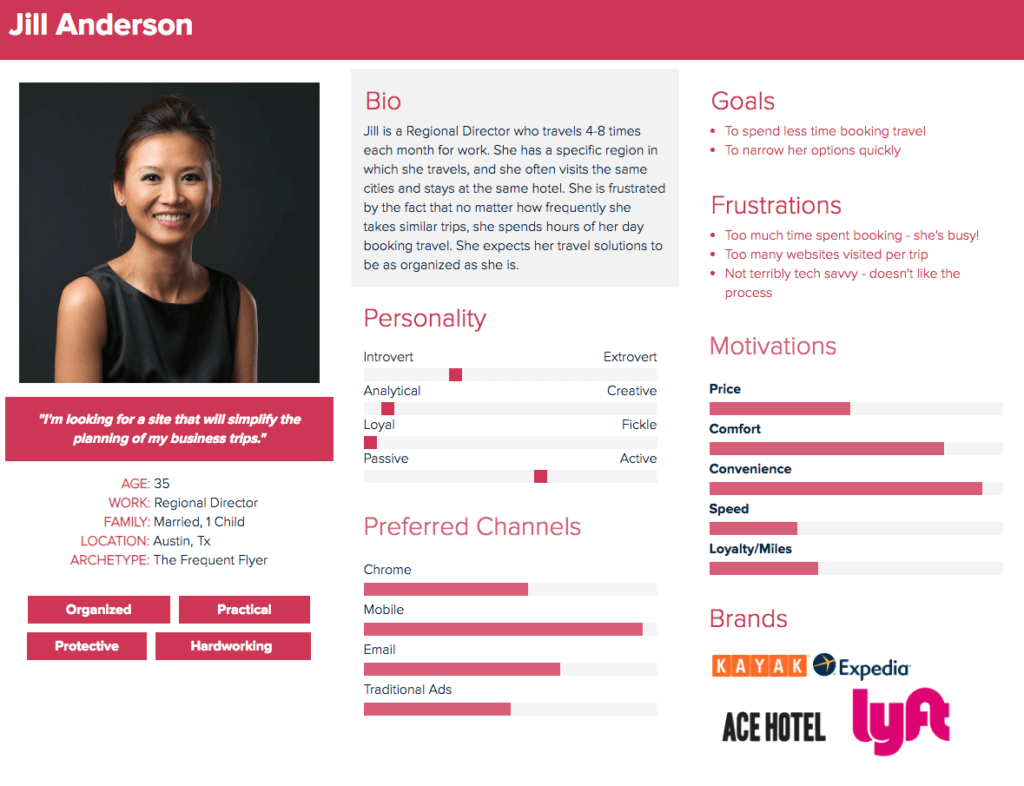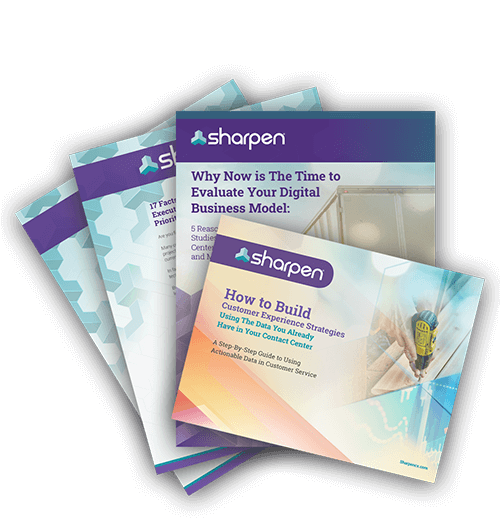
It’s Never Too Late to Build Your Digital Customer Experience Strategy. Here’s How to Take Steps Forward Today.
Many business leaders recognize that stepping up their digital game will lead to more efficient systems, innovation, and customer satisfaction. But the problem is, where do you even begin?
Keeping up with digital trends is a full-time job. And businesses have to work double-time to stay ahead of the digital curve. The pandemic sped up urgency even more: customer expectations shot through the roof and businesses had to adapt to virtual processes overnight. With shifting needs and expectations this year, many businesses have reckoned with the fact that their systems are outdated. And that their processes often slow them down rather than help their teams work better.
When businesses fall behind, customers feel the pain the most. That’s why 72% of businesses say improving CX and engagement is their top goal for digital transformation this year.
The process of going digital sounds great: streamline your digital customer experience, make your agents more efficient, integrate every process.
But it can also be so overwhelming.
The amount of data, strategies, “best practices,” and software options out there give you so many choices they paralyze you. Where do you begin? How much will it cost? Do you have to totally restructure your company’s strategy? Is it worth it? (Hint: YES. It is.)
You end up doing nothing because you don’t know where to start. And so the work continues to pile up.
I’m here to encourage you to press start on important digital projects. Here are some actionable steps you can take to begin improving your digital customer experience. It’s not too late.
1. Get to know your customers
The digital customer experience is all about the customer. That may seem obvious, but it can be easy to lose sight of your #1 goal when dreaming up grand digital strategies. If you want to launch into digital CX, you have to first know who your customers are, how they behave, and what they want out of your product or service. You can tailor your digital customer experience to different kinds of users these days, so it’s important to know how to reach each of your targeted demographics. You’ll get more bang for your buck if you know what kind of experience your customers want.
Spend time getting to know your customers. Collect data you already have in your contact center to review your current customers. Look at metrics to identify customer demographics and behaviors. And, spend time thinking about your targeted audience. Are there demographics that want a different experience than what you already offer? For example, Gen Z and Millennials prefer live chat over phone support.
A helpful exercise is to put together a series of customer personas. Marketing teams typically create buyer personas that help them ID and target the right buyers. Similarly, creating these customer personas help service teams understand more about each of their customers and what they expect from your call center. Each persona represents a specific type of customer that fits into one of your customer demographic groups.
To begin a customer persona, ask yourself questions such as:
- What is this customer’s demographics? (age, gender, location, income, job, etc)
- What motivates this customer?
- What product(s) has this customer purchased from us?
- How does this person like to reach us or be reached? (i.e. favorite communication channel?)
- What are the customer’s most common issues or concerns with our product?
- How loyal is this customer? Does he or she only make one-time purchases?
- What are his or her favorite brands?
Here’s an example of a good customer persona:

[Download Now] Use the data you already have in your contact center to identify customers and build out a better customer experience
2. Take inventory of your current systems
Once you’ve learned about your primary customers and their needs, take a step back and evaluate your current systems. Taking inventory of your current systems and tools helps you identify what’s currently working for your business and what’s a money or time waster. Plus, you can easily spot holes in your processes, so you ID what strategies to focus on.
Find out which systems you’re using (or not using), what their intended purpose is, and what their strengths and weaknesses are. Run a scenario with your current systems as if you’re helping a customer. Why did the customer reach out for help? And, how did they contact your company? Did they fill out a ticket through your ticketing system, or did they message your call center directly via chat? ? Where do your systems succeed at helping that customer? Where do they fall flat?
One of the simplest ways to map out this information and visualize it is with a spreadsheet.
Here’s a (simplified) example:
| System | Uses | Benefits | Problems |
|---|---|---|---|
| Call center system | IVR to route calls to the right agent, queues up interactions for agents, monitors and records interactions for later review | Customers who reach out for help get routed to the right place, call recordings help with agent coaching, having all interactions in one place makes reporting easy | It isn’t omnichannel so I can only route phone calls to agent queues, I can’t customize my reports without paying extra, I can’t change my routing without help from my vendor or IT |
| CRM | Capture customer information and track customer history, | Offers a clear view of the customer journey and each customer’s unique history with the call center. | It doesn’t integrate with my call center system, so my agents don’t have fast access to customer info. |
Now that you can visualize everything, ask important questions about each system.
Start with questions like these:
- Do my systems currently integrate with one another?
- Do they support omnichannel interactions?
- Can I coach directly in my call center platform?
- Do my systems have APIs so our teams can build custom integrations if we need to?
- Can I customize my reports to the needs of different stakeholders?
[Read Next] What to look for in your next cloud call center system platform
3. Create an RFP for new technology
If you find gaps in your current systems, the next step is to develop an RFP for technology that supports your business needs. Create a list of questions and criteria around the digital customer experience you want to build, and submit it to prospective vendors for a response. Vendors will answer your questions so you can decide who best meets your business needs.
Not sure where to start with the RFP? Start with basic who, what, when, and why questions to wrap your head around what you need.
Here are some example questions to ask yourself:
What: What kind of functionality is most important to helping my agents work more efficiently? Do I know what I want to accomplish with this new technology? What changes do I need to make to my customer experience?
Why: Why is this new technology important for our business? Why do we need this to perform X, Y, Z?
How: How will a new system improve our digital customer experience? How will it integrate with our current processes?
Who: What vendors sell this product? Which team members will use the new technology? Who does this benefit the most (within our company and with customers)?
When: When do we want to implement new technology?
Draft an RFP based on your customers’ needs and your business goals. Then, send it to the vendors you’ve identified that can deliver a strong digital platform to transform your digital customer experience. The RFP must be clear and concise so your bidding vendors know what system enhancements to promote. They’ll understand why you need them and be able to answer what value they’ll provide your customers.
Ask potential vendors questions like:
- What can you deliver that your competitors can’t?
- What value can your product provide to our customers?
- How will your product improve our digital strategy?
- What does the potential roll-out process look like? How long would purchasing, implementation, and training take?
[Download Now] Sharpen’s 101 questions to ask in your next RFP to accomplish your digital customer experience goals
4. Upskill your agents to manage your new technology
Once you’ve implemented a new digital system, your first priority should be to train your agents. If you don’t have knowledgeable people managing your slick new system, there’s no point in having it. Contact centers already face the threats of high turnover because of industry stressors and misconceptions about customer service. And about 51% of agents leave their jobs because they lack training and advancement opportunities.
Upskill your agents to be prepared to handle more complex issues and answer customer questions while using your systems and platforms efficiently.
Give them 1:1 coaching time. Check in with your agents regularly and talk through their performance. Bring metrics to each meeting for proof of each agent’s progress. Talk through what’s working and what could be better. And, deliver relevant feedback for each agent. Once you’ve met with your agents 1:1, you’ll be more prepared to strengthen your team. Investing in your agents will make them more satisfied in their role, more knowledgeable for your customers, and more profitable for your company. Gallup found companies that strategically invest in their employees see 11% greater profitability. And, they’re twice as likely to retain employees.
If you add any new systems to the mix as you build out your digital customer experience, you may need to redefine key processes along the way.
Make sure to clarify and define processes with your agents, so they feel empowered and prepared for new customer questions.
[Read Next] Follow these 3 pillars to help you manage a healthy customer service team


